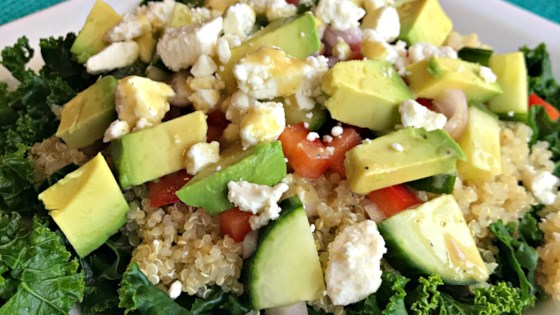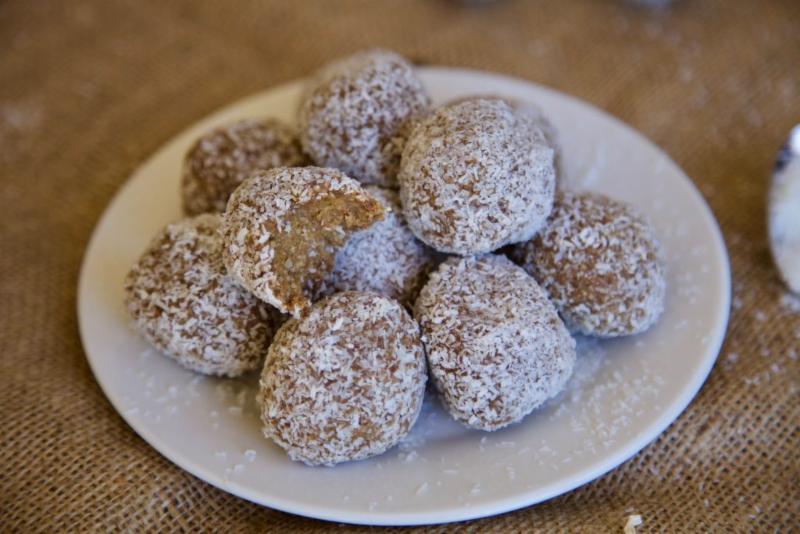| Follow us on Twitter
and view us on Instagram to receive nutrition & health tips as well as information about upcoming events!  
|
|
Nutrition Energy
In the News!
|
Join Our List
 |
| Become a fan! |
| 
|
|
|
|
Announcing Nutrition Energy's 2nd Office Location!
|
We are very excited to announce a 2nd office location for Nutrition Energy!
Beginning Tuesday, June 4th, Nutrition Energy RDs will be available within the Spring Forward Physical Therapy Office in the Financial District:
55 Broadway
Suite 201
New York, NY 10006
We are currently scheduling appointments for that office now. Please call us at 646-361-6803 to book an appointment at either office!
We look forward to seeing you there!
|
|
Support Your Bones So They Can Support You!
|
We know that our bones play several important roles in the body, but how often do you really stop to think about and appreciate them? Our bones protect our vital organs, allow us to move our body using the muscles attached to them, and they act as a site for backup storage of minerals when levels are low in the blood. As you might imagine, it is important to maintain a healthy diet alongside a regular exercise regimen and good lifestyle habits to keep our bones healthy and in optimal condition.
Let's take a moment to discuss a bit of the science behind the dynamic nature of bones. Bone tissue is made up of a matrix consisting of several types of cells embedded in collagen fibers (a type of protein), which are mineralized to enhance strength and durability. These minerals include calcium (99% of all calcium in the body!), phosphorus, magnesium, and potassium. Additionally, there are other nutrients that are important for bone health that play a more active role; these include vitamin D, K, A, and C, as well as zinc.
-
Vitamin D allows for absorption of calcium from your intestines into the body
-
Vitamin K is involved in the binding of calcium to the collagen fibers in bone tissue
-
Vitamin A works alongside vitamin D, vitamin C and zinc in the production of collagen fiber from bone cells
Each of the above nutrients can be obtained by eating a wide variety of foods which will promote optimal bone health. See the table below for food sources of each nutrient mentioned above. Luckily as you will see, there is a lot of overlap here, so making sure you include even a few key foods in your daily and weekly intake can go a long way towards feeding your bones.
|
Nutrient
|
Sources
|
|
Calcium
|
Dairy products, fortified milk substitutes, dark leafy green vegetables, fish with bones, fortified fruit juices, broccoli, fortified breakfast cereals
|
|
Phosphorus
|
Dairy products, eggs, fish, lean meat, nuts, legumes, whole grains
|
|
Magnesium
|
Leafy green vegetables, whole grains, nuts, legumes, milk, yogurt, fortified foods such as breakfast cereals
|
|
Potassium
|
Many fruits and vegetables especially bananas, oranges, cantaloupe, potatoes, and avocados; nuts, legumes, meat, poultry, fish, milk, yogurt
|
|
Vitamin D
|
Mainly found naturally only in fish; fortified dairy products, fortified milk substitutes, and fortified fruit juices
|
|
Vitamin K
|
Leafy green vegetables, broccoli, cauliflower, cucumbers, carrots, fish, liver, meat, eggs
|
|
Vitamin A
|
Cod liver oil, eggs, orange and red fruit/vegetables, dark leafy green vegetables, fortified dairy products and fortified breakfast cereals
|
|
Vitamin C
|
Broccoli, brussel sprouts, cauliflower, dark leafy green vegetables, potatoes, tomatoes, strawberries, citrus fruits, green and red peppers
|
|
Zinc
|
Meat, poultry, nuts, legumes, whole grains, dairy products, and fortified cereal
|
Other points to consider:
-
Include a source of healthy fat (avocado, olive oil, nuts etc), when eating foods containing vitamins A, D, and K, as these fat soluble vitamins can only be absorbed when eaten with some fat.
-
Protein intake is also essential, as it is what makes up the framework for our bones. When it comes to bone health, it is imperative that your protein intake is in the right range for you-meaning neither excessive nor inadequate. Because individual protein needs can vary widely, it is highly recommended that you speak to your dietitian in order to determine your personal protein needs.
-
Consider reducing alcohol consumption and seek help quitting smoking if you do smoke, as according to the NIH, both contribute to an increased risk of osteoporosis.
As you may already have heard, exercise is important for optimal bone health! As part of the body's amazing ability to adapt, the body increases its bone mass in response to external forces, such as those which occur during weight-bearing exercise.
How does this work? Bones are constantly turning over old tissue with new tissue, regardless of one's level of physical activity. With weight-bearing exercise as a stimulus to increase bone tissue production, there is an opportunity for a net increase in bone density up to age 30. After age 30, weight-bearing exercise can reduce the risk of loss of bone mass. With less stimulus, (minimal physical activity, insufficient nutritional intake, or lower than ideal body weight), there is a greater loss of bone tissue at all ages.
Now that you have an understanding of how to keep your bones healthy and strong, we hope you will use the above information in your daily life, by increasing your intake of foods that support bone health and incorporating weight-bearing exercises into your schedule.
|
|
|
Extend Your Endurance Exercise with Sports Gels!
|
Every athlete seeks ways to optimize their performance in workouts and during competitions; whether it is through a sports specific training regimen, improving recovery time, or optimizing their nutrition. One way to help improve athletic performance is by taking in simple carbohydrates during long and intense training sessions and prolonged completions-and one way to accomplish this is through the use of energy gels.
Some of you are all too familiar with these small, squishy packets of sugary goop-and others of you may be wondering, what we are writing about. For those of you who are not yet familiar with them, energy gels are small, portable packets containing rapidly absorbed carbohydrates, which are taken during exercise in order to provide rapid energy to working muscles and help spare muscle glycogen (stored energy you can then rely on later). As we have discussed in past newsletters, taking in carbohydrates during exercise can help reduce fatigue and will keep you energized. Energy Gels contain varying amounts of carbohydrate, electrolytes and/or caffeine. (See chart below for popular brands and ingredients). You will want to consume 30-60 grams of carbohydrate per hour when exercising at moderate intensity for 1-2.5 hours and up to 80-90 grams per hour when exercising for over 2.5-4 hours. Most gels should be taken with water for optimal absorption. They may be used in addition to sports drinks throughout your training session or race/game, depending on duration of activity, fluid needs, and practicality. A few newer gels on the market are isotonic, meaning the solution is at the same concentration as your body and there is no need to take them with water to dilute them (this also means these gel packages are larger).
Popular Gels:
|
Product
|
Description and Details
|
Nutritional Info
|
|
Honey Stinger Organic Gel
|
-
Organic and gluten free
-
Contains mostly honey
|
|
Huma Plus Chia Energy Gel
|
-
Made with all real food ingredients, including chia seeds
-
Gluten free, dairy free, and vegan
-
*NOTE: These "Plus" gels are great for athletes with higher sodium needs
|
|
|
|
|
|
|
|
|
-
Available in 9 flavors
-
22-25g carbs
-
Chocolate, Chocolate Cherry, Double Espresso, and Mocha flavors contain 60mg of sodium; Boston Cream Pie, Citrus, and Vanilla flavors contain 90mg; Razz and Strawberry flavors contain 95mg
-
Chocolate Cherry and Double Espresso flavors contain 100mg of caffeine; Mocha flavor contains 50mg; Strawberry and Citrus flavors contain 25mg
|
|
|
|
|
Gatorade Endurance Energy Gel 
|
|
|
-
Note: for reference an average 6oz cup of coffee contains ~ 100 mg caffeine and a cup of black tea contains ~ 40 mg of caffeine
-
Most if not all of these products can be found in your local sports shop, directly from the product website, or other online vendors (yes, that includes Amazon).
Now that you're training is ramping up and you know the importance of and variety of gels available, go out and buy a few to try them out and see which ones work for you.
|
|
A Boost for Your Bones! Calcium Rich Recipes:
|
Kale, Quinoa, and Avocado Salad with Lemon Dijon Vinaigrette
sourced from allrecipes.com
Ingredients: 
-
2/3 cup quinoa
-
1 1/3 cups water
-
1 bunch kale, torn into bite-sized pieces
-
1/2 avocado - peeled, pitted, and diced
-
1/2 cup chopped cucumber
-
1/3 cup chopped red bell pepper
-
2 tablespoons chopped red onion
-
1 tablespoon crumbled feta cheese
Dressing:
-
1/4 cup olive oil
-
2 tablespoons lemon juice
-
1 1/2 tablespoons Dijon mustard
-
3/4 teaspoon sea salt
-
1/4 teaspoon ground black pepper
Directions:
-
Bring the quinoa and 1 1/3 cup water to a boil in a saucepan. Reduce heat to medium-low, cover, and simmer until the quinoa is tender, and the water has been absorbed, about 15 to 20 minutes. Set aside to cool.
-
Place kale in a steamer basket over 1 inch of boiling water in a saucepan. Cover saucepan with a lid and steam kale until hot, about 45 seconds; transfer to a large plate. Top kale with quinoa, avocado, cucumber, bell pepper, red onion, and feta cheese.
-
Whisk olive oil, lemon juice, Dijon mustard, sea salt, and black pepper together in a bowl until the oil emulsifies into the dressing; pour over the salad.
This recipe is great for supporting bone health as it is a good source of calcium from the kale and feta, magnesium from the quinoa, potassium from the avocados, vitamin K from the cucumbers, and vitamin C from the peppers.
Calcium Rich Vanilla Balls
sourced from megsandsoph.com
Ingredients: 
-
1/2 cup sunflower seeds
-
1/2 cup sesame seeds
-
1/2 cup almonds (or other nut/seed)
-
1/2 cup shredded coconut
-
1/2 cup oats
-
3 scoops Vanilla protein powder - Nuzest pea protein (or other plant-based protein)
-
1 cup dried dates soaked or 8 fresh medjool dates
-
3/4 cup water from soaked dates
-
dash of real sea salt or Himalayan rock salt
-
1 Tbsp. smooth 100% peanut butter
-
extra coconut for rolling
Instructions:
-
Blend sunflower, sesame and almonds together on low/med setting, into a fine flour.
-
Add into a large bowl.
-
Blend coconut, oats together into fine flour, then add to bowl as well.
-
Add protein powder and salt. Stir all dry ingredients together.
-
Add dates to the blender with 1/2 cup water to start with and start blending on low using the stick to get it moving. Slowly add another 1/4 cup until the mixture is thick but smooth.
-
Pour into the dry ingredients and get mixing!
-
Once combined roll in balls whichever size you want, then roll in shredded coconut.
-
About halfway through the mixture add 1 Tbsp peanut butter and mix well.
-
Continue rolling into balls then roll in shredded coconut.
-
Store in a sealed container in the fridge, ready to eat when you are!
This recipe is great for an on-the-go snack that is high in magnesium, potassium, phosphorus and zinc, which come from the nuts, seeds, and oats included in the recipe.
|
|
Announcing Nutrition Energy's Newest RDs!
|
We are very excited to announce our newest Nutrition Energy Registered Dietitians!
Cara Dubinsky MS, RDN, CDN
 Cara is a Registered Dietitian Nutritionist and New York State Certified Dietitian Nutritionist. She holds a Master's of Science in Nutrition and Dietetics from New York University. Cara offers practical nutritional guidance and specializes in creating individualized plans for all types of clients. Cara's areas of expertise include weight management, cardiovascular disease, diabetes management and digestive disorders. She also has a special interest in pediatrics and special needs. Cara is a Registered Dietitian Nutritionist and New York State Certified Dietitian Nutritionist. She holds a Master's of Science in Nutrition and Dietetics from New York University. Cara offers practical nutritional guidance and specializes in creating individualized plans for all types of clients. Cara's areas of expertise include weight management, cardiovascular disease, diabetes management and digestive disorders. She also has a special interest in pediatrics and special needs.
Tanya Mezher MS, RD
 Tanya is a Registered Dietitian who earned her Master's degree in Nutrition Education from Teachers College, Columbia University. She is passionate about empowering her clients to prioritize self-care in an often busy and stressful dynamic of balancing personal and professional goals and responsibilities. Tanya is enthusiastic about helping you attune to your body and needs to achieve your goals while enjoying food and life. Tanya is a Registered Dietitian who earned her Master's degree in Nutrition Education from Teachers College, Columbia University. She is passionate about empowering her clients to prioritize self-care in an often busy and stressful dynamic of balancing personal and professional goals and responsibilities. Tanya is enthusiastic about helping you attune to your body and needs to achieve your goals while enjoying food and life.
We hope you join us in welcoming Cara and Tanya to Nutrition Energy!
|
|
A Note from Lauren...
|
With the summer months coming, it is not only important to plan out your hydration and fueling but to also test multiple times prior to race day. During the humid months of summer, our bodies sweat more and it is much easier to become dehydrated. It is essential to replace the sodium and fluid lost from sweat and keep your body working at it's best to ensure better performance and recovery. Please read our article about Sports Gels to help you choose the best product for your endurance needs!
Many changes are coming to Nutrition Energy! With our 2nd location opening and welcoming two new Dietitians, we have been busy preparing for the summer!
Lauren Antonucci, Director
Nutrition Energy
|
|
|